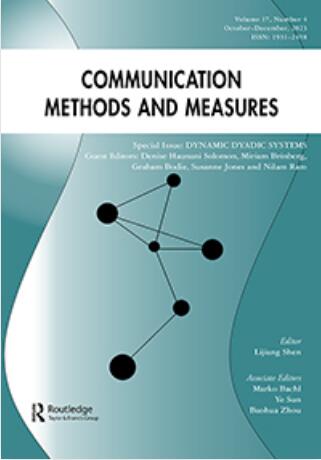社会科学计算文本分析方法的三个空白:一个研究议程
IF 3.7
1区 文学
Q1 COMMUNICATION
引用次数: 51
摘要
摘要:本文确定了限制计算文本分析方法(CTAM)在社会科学研究中的应用和进展的三个差距。首先,我们认为CTAM的发展优先考虑了技术而不是有效性问题,对社会科学测量的操作化关注有限。其次,我们发现ctam专注于提取特定内容和文档级模式,而社会科学研究人员需要测量文本中多个通常是复杂的内容,这两者之间存在不匹配。第三,我们认为英语语言工具的主导地位抑制了比较研究和对研究英语以外语言的学术团体的包容性。我们通过对计算社会科学方法论工作的广泛回顾,以及使用定量文本分析的领先研究出版物的清单,来证实我们的主张。随后,我们讨论了这三个差距对社会科学家对CTAM的不均衡吸收以及整个计算社会科学文本研究领域的影响。最后,我们提出了一个研究议程,旨在弥合已确定的差距,提高CTAM的有效性,实用性和包容性。本文章由计算机程序翻译,如有差异,请以英文原文为准。
Three Gaps in Computational Text Analysis Methods for Social Sciences: A Research Agenda
ABSTRACT We identify three gaps that limit the utility and obstruct the progress of computational text analysis methods (CTAM) for social science research. First, we contend that CTAM development has prioritized technological over validity concerns, giving limited attention to the operationalization of social scientific measurements. Second, we identify a mismatch between CTAMs’ focus on extracting specific contents and document-level patterns, and social science researchers’ need for measuring multiple, often complex contents in the text. Third, we argue that the dominance of English language tools depresses comparative research and inclusivity toward scholarly communities examining languages other than English. We substantiate our claims by drawing upon a broad review of methodological work in the computational social sciences, as well as an inventory of leading research publications using quantitative textual analysis. Subsequently, we discuss implications of these three gaps for social scientists’ uneven uptake of CTAM, as well as the field of computational social science text research as a whole. Finally, we propose a research agenda intended to bridge the identified gaps and improve the validity, utility, and inclusiveness of CTAM.
求助全文
通过发布文献求助,成功后即可免费获取论文全文。
去求助
来源期刊

Communication Methods and Measures
COMMUNICATION-
CiteScore
21.10
自引率
1.80%
发文量
9
期刊介绍:
Communication Methods and Measures aims to achieve several goals in the field of communication research. Firstly, it aims to bring attention to and showcase developments in both qualitative and quantitative research methodologies to communication scholars. This journal serves as a platform for researchers across the field to discuss and disseminate methodological tools and approaches.
Additionally, Communication Methods and Measures seeks to improve research design and analysis practices by offering suggestions for improvement. It aims to introduce new methods of measurement that are valuable to communication scientists or enhance existing methods. The journal encourages submissions that focus on methods for enhancing research design and theory testing, employing both quantitative and qualitative approaches.
Furthermore, the journal is open to articles devoted to exploring the epistemological aspects relevant to communication research methodologies. It welcomes well-written manuscripts that demonstrate the use of methods and articles that highlight the advantages of lesser-known or newer methods over those traditionally used in communication.
In summary, Communication Methods and Measures strives to advance the field of communication research by showcasing and discussing innovative methodologies, improving research practices, and introducing new measurement methods.
 求助内容:
求助内容: 应助结果提醒方式:
应助结果提醒方式:


